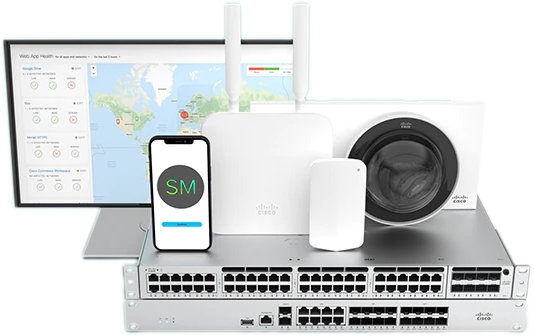 Advancing technology has brought various changes to every industry, and the health sector is no exception. Leading technological advancements, specifically Telehealth, has brightened the future of healthcare service provision. Better known as telemedicine, it refers to the use of electronic communications, such as remote patient monitoring, image sharing, video calling, and teleconferencing in the provision of patient care.
Advancing technology has brought various changes to every industry, and the health sector is no exception. Leading technological advancements, specifically Telehealth, has brightened the future of healthcare service provision. Better known as telemedicine, it refers to the use of electronic communications, such as remote patient monitoring, image sharing, video calling, and teleconferencing in the provision of patient care.
With this technology, patients can consult doctors anywhere, anytime, thereby improving healthcare access for patients nationwide. With such benefits, most care providers adopt Telehealth services, with approximately 76 percent of hospitals connecting and consulting with patients remotely. That said, below are some ways that Telehealth has evolved healthcare.
Improved Access to Healthcare in Rural Areas
Enhanced access to better quality healthcare by patients in rural settings is probably the number one advantage of Telehealth. Telemedicine technology provides an opportunity for patients in rural settings of the United States, developed, and developing countries globally to access quality healthcare  services. Constant consultations with remote teams can help in addressing minor conditions before they worsen. Excellent examples include treating cataracts and other minor eye conditions before causing blindness and providing antenatal education to mothers during pregnancies.
services. Constant consultations with remote teams can help in addressing minor conditions before they worsen. Excellent examples include treating cataracts and other minor eye conditions before causing blindness and providing antenatal education to mothers during pregnancies.
Despite such beneficial effects, the main obstacle to full access is the lack of equipment to facilitate remote consultations. Lack of computers, scanners, printers, and even internet access in rural areas is a significant hindrance to such developments.
Betters the Performance of ICU Teams
Apart from emergency rooms, the intensive care unit is another stressful hospital area to work in. Patients in the ICU have life-threatening conditions, putting them at high risk. From the doctors, nurses, anesthetists, and other support staff, the ICU team are always on their toes. Unfortunately, with the heavy workload, minimal errors, such as missed or delayed doses, which can cost the patients' life, often occur.
Taking advantage of telemedicine in such critical areas can save human life. With the introduction of Tele-ICU, the ICU team benefits from the second set of eyes as it improves attention to patients' status. Tele-ICU betters patient monitoring, stores doctors and nurses notes for easier reference, and eases patient assessment through cameras connected to the nursing stations.
Quick Diagnosis and Treatment of Strokes
Stroke is a fatal medical emergency whose patients should receive immediate attention. This can be a problem for patients living far from hospitals or in areas with limited accessibility. In other situations, even with a quick response by medical personnel, hinges in treatment, such as the ability to note key symptoms for the administration of essential medication, are evident. Besides, physicians in local hospitals may not have the expertise to make such decisions.
Fortunately, the introduction of telestroke services has improved the treatment of stroke in many ways. For instance, videoconferencing consultations have made it possible for remote physicians in rural areas to make an accurate diagnosis and administer correct treatments. The use of telestroke in remote areas of Alberta has also significantly reduced ER transfers by 92%. Radiologists and neurologists can also share imaging results using various smartphone applications for better consultation and improved patient care.
Patients Can Manage Chronic Conditions Better
Apart from stroke, Telehealth has empowered patients to control chronic conditions such as diabetes, hypertension, and other digestive issues. Telemedicine has significantly reduced the costs of hospital visits for checkups and patient monitoring in patients with diabetes. With this technology, patients can monitor their calories, monitor vital signs, medication dosage, and schedules with ease. Medical teams can also check-in and monitor patients' progress remotely.
For patients with hypertension and digestive problems, a simple video call with physicians is all they need. Patients can also describe their symptoms through emails, perform guided self-tests, and follow various educational programs to better their conditions. These technologies transfer essential care applications from the medical teams to patients, empowering them to take charge of their conditions.
Patients Can Undergo Rehabilitation at Home
Critically ill patients suffering from stroke and neurological conditions need continuous monitoring even after discharge from the ICU or ER. Initially, such patients had to make endless expensive trips to health care facilities for their scheduled follow-ups. However, the use of telemedicine in patient follow-up and rehabilitation eliminates this.
Physicians can conduct cognitive assessments, lead group therapies, monitor patient's pedometer readings, and provide patients with online publications remotely. Telemedicine also helps patients recovering from lung conditions participate in educative video conference sessions while attending local centers for physical rehabilitation with ease.
Telehealth; the Future of Healthcare
Without a doubt, Telehealth is significantly redefining healthcare service provision. Such technology leads to better health outcomes by improving patients' access to healthcare, lowers healthcare costs, and enable physicians to provide early interventions. Other technology trends in healthcare, such as artificial intelligence, will take these developments a notch higher. It will also make virtual healthcare service provision an essential skill for physicians.










